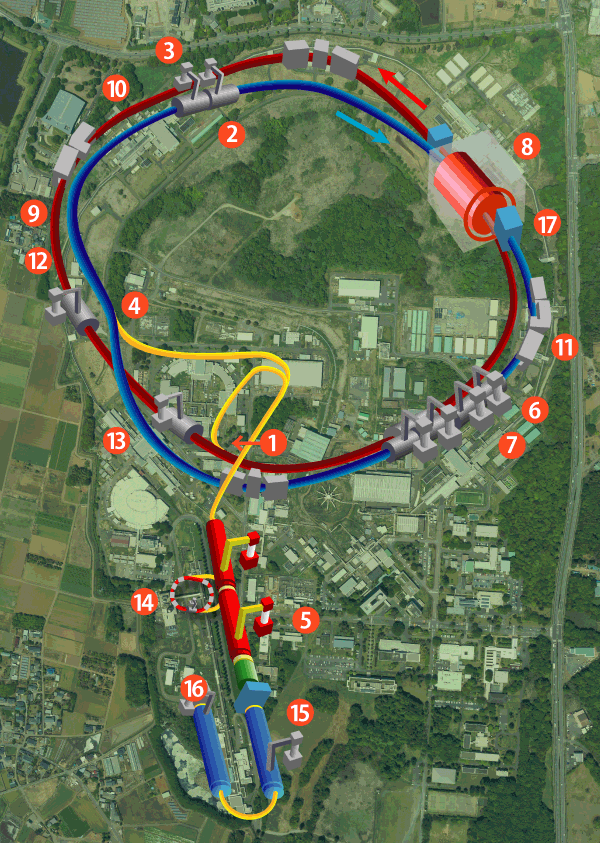Japan Proton Accelerator Complex (J-PARC) is a high-intensity proton accelerator to provide various secondary particles such as neutrinos, neutrons, and mesons for a variety of experiments at T2K, MLF, and the Hadron Hall.
Purpose and Vision
The J-PARC accelerator consists of the Linac, the Rapid Cycle Synchrotron (RCS), and the Main Ring (MR). The Linac accelerates negative hydrogen ions (H-) up to 181 MeV to inject to the RCS. The negative ions are converted to protons at the injection point of the RCS by a charge-stripping foil. The RCS accelerates protons up to 3 GeV at 25 Hz repetition rate, then extract them to the Material and Life science Facility (MLF) and the MR. The MR accelerates the protons up to 30 GeV, then extract in one turn to the T2K neutrino target or slowly to the Hadron Hall.
J-PARC accelerator has been constructed and operated with a tight cooperation of Japan Atomic Energy Agency (JAEA) and KEK under the J-PARC Center.
Summary
The beam powers from the RCS to the MLF, the MR to T2K, and the MR to the Hadron Hall) reached 300 kW, 240 kW, and 15 kW, respectively, in the regular operation in 2013. The number of protons in a bunch is already the highest in the world.
To achieve the design power, 1 MW/750 kW in RCS/MR, the Linac energy will be upgraded to 400 MeV, and the repetition period of the MR will be shorten from 2.4 sec to 1 sec. The Linac upgrade will be completed in early 2014, and the MR upgrade will be finished in around 2017.
Various new technologies have been developed to achieve such high intensity proton beam, including Annular Coupled Structure (ACS) for the Linac, high-durability charge stripping foil, accelerating cavity with magnetic alloy core, full-ceramic beam pipe, etc. Also understanding of the beam dynamics under very strong space-charge nonlinear force was necessary.
Related Web sites
J-PARC
JAEA
Super-Kamiokande
Related facilities
Materials and Life Science Experimental Facility


